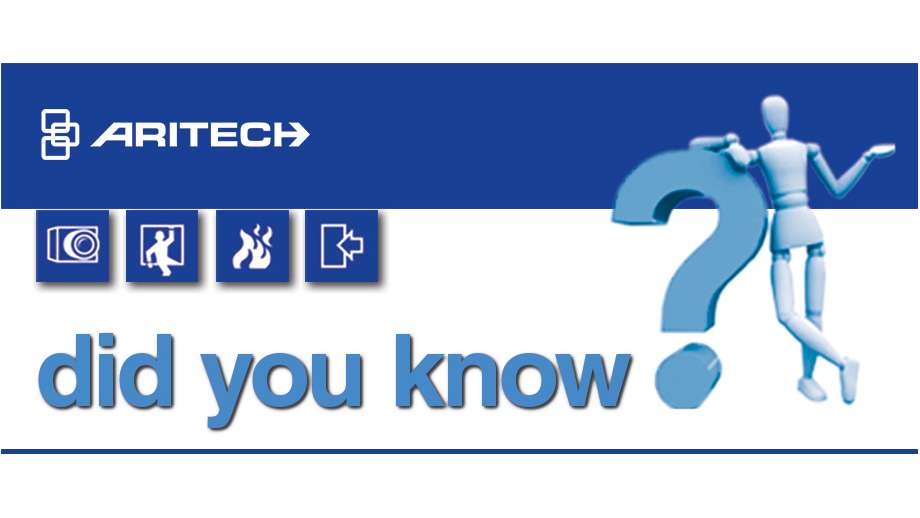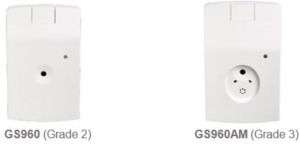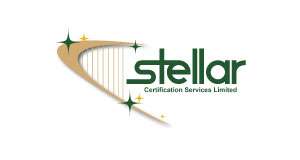Product

Did you know about our Aritech Glassbreak sensors?
Overview
Research indicates that in the majority of residential and small commercial installations, glass is broken to facilitate gaining entry. In order to protect valuable assets, it is paramount to prevent intruders entering the premises. Unlike other detection sensors, such as magnetic contacts, glass break sensors are specifically designed to alarm in the first seconds of an intrusion attempt. Therefore, glass break sensors can be seen as complementing a full security solution.
There are a number of different technologies that can be considered for protecting glass doors and windows against intrusion attempts.
Acoustic glass break sensors
Acoustic glass break sensors have gained popularity over recent years.
They cover a wider area and number of windows than would be possible with other methods of detection, and typically have a detection range of around 8 metres.
We produce a range of acoustic glass break sensors, including our latest GS960 Series with GS960 (Grade 2) and GS960AM (Grade 3) versions available.
Acoustic glass break sensors use a microphone to listen for the sounds of breaking glass which are then analysed. The GS960 Series activates when glass is smashed during intrusion attempts through windows, doors or glazed walls. Advanced micro-controller technology is used, which is programmed to take account of many relevant acoustic factors. Using ‘Digital Room Compensation’ these detectors can distinguish between a true glass break and other irrelevant sounds.
With a coverage distance of up to 9 Metres and a coverage angle of 165°, this allows one detector to protect several windows within the same room, which is more cost effective and simpler to install, than using several conventional glass break sensors. The GS960 series will detect the breaking of different types of glass panes such as single glazed (float and tempered), double glazed (float and tempered), double glazed where the inner pane is covered with security film, triple glazed (float and tempered) and laminated glass pane.
The design of the detectors makes them suitable for wall or ceiling mount, as long as they have a free ‘line-of-sight’ to the window being protected.
The GS960AM (Grade 3 variant) is additionally equipped with an ‘anti-masking’ function, which activates upon attempted sabotage of the microphone. When sealing the microphone completely with elastic material such as chewing gum or isolation tape, it will be detected. When removing those materials the sensor will go back to its normal state.
There is also a range of special tools and accessories available.

GS960 Features
- Protection of multiple windows in a room
- Maximum detection range up to 9 meters
- Coverage angle of 165°
- Detect glass breaking up to triple panes
- Separate accessory for set-up and testing available
- 24/7 internal self-test procedure
- GS960 is EN 50131-2-7-1 & PD6662:2017 Grade 2 compliant
- GS960AM is EN50131-2-7-1 & PD6662:2017 Grade 3 (anti-mask) compliant
Ordering information for GS960 series
GS960: Acoustic glass break sensor, EN Grade 2
GS960AM: Acoustic glass break sensor, AM, EN Grade 3
GS960-TR: Tester / calibration tool for GS960 Series
GS960-RB : EOL resistor PCB for GS960 Series
Inertia shock sensors
Conventional ‘inertia’ shock sensors were one of the first methods of protecting glass (excluding closed circuit foil).
These sensor(s) are glued to the surface of the glass to be protected, and they generally require a separate ‘analyser’ unit between the sensors and the control panel, due to the fast reaction needed (although our Advisor Advanced panel does offer a built-in inertia analyser).
Our glass break detector GS300 series is based on Piezo technology. In any case of mechanical stress produced by the breaking glass shock waves, Piezo electric sensors produce an electrical response. These sensors filter out all unwanted signals that could result in nuisance alarms, and detect the specific ultrasonic frequencies produced by breaking glass, assuring excellent detection.
They are suitable for use on standard window glass or plate glass, and the product provides a 2 metre radius of protection. The detector may be fitted as close as 2 cm from the window frame, and still provide a 2 metre radius of coverage on standard glass. The detector is moulded into a plastic housing and supplied with a 2 metre cable. The sensor includes a built-in latch LED indicator, for easy identification of alarmed detectors. The GS300 series are EN50131-2-7-2 approved.

Stand-alone shock sensors
In many applications, Installers prefer to use ‘stand-alone’ shock detection rather than ‘inertia’ sensors. This is because the sensor is attached to the frame of the door or window to be protected instead of directly to the glass, and everything is self-contained within the sensor, so that no analyser is required.
Stand-alone shock sensors offer a versatile solution for detection of forced entry through windows or doors, with a detection range of up to 6 metres. The sensor includes adjustable gross attack and pulse count sensitivity, and offers a standard ‘Normally Closed’ alarm relay output (unlike most inertia detectors).

Please see the links below where you can download data sheets for the GS960 series, or for any of our Intruder products from our website at ie.firesecurityproducts.com.
Important links
GS960 | GS960AM | GS960-TR | GS960-RB | GS300 series | GS620N


































